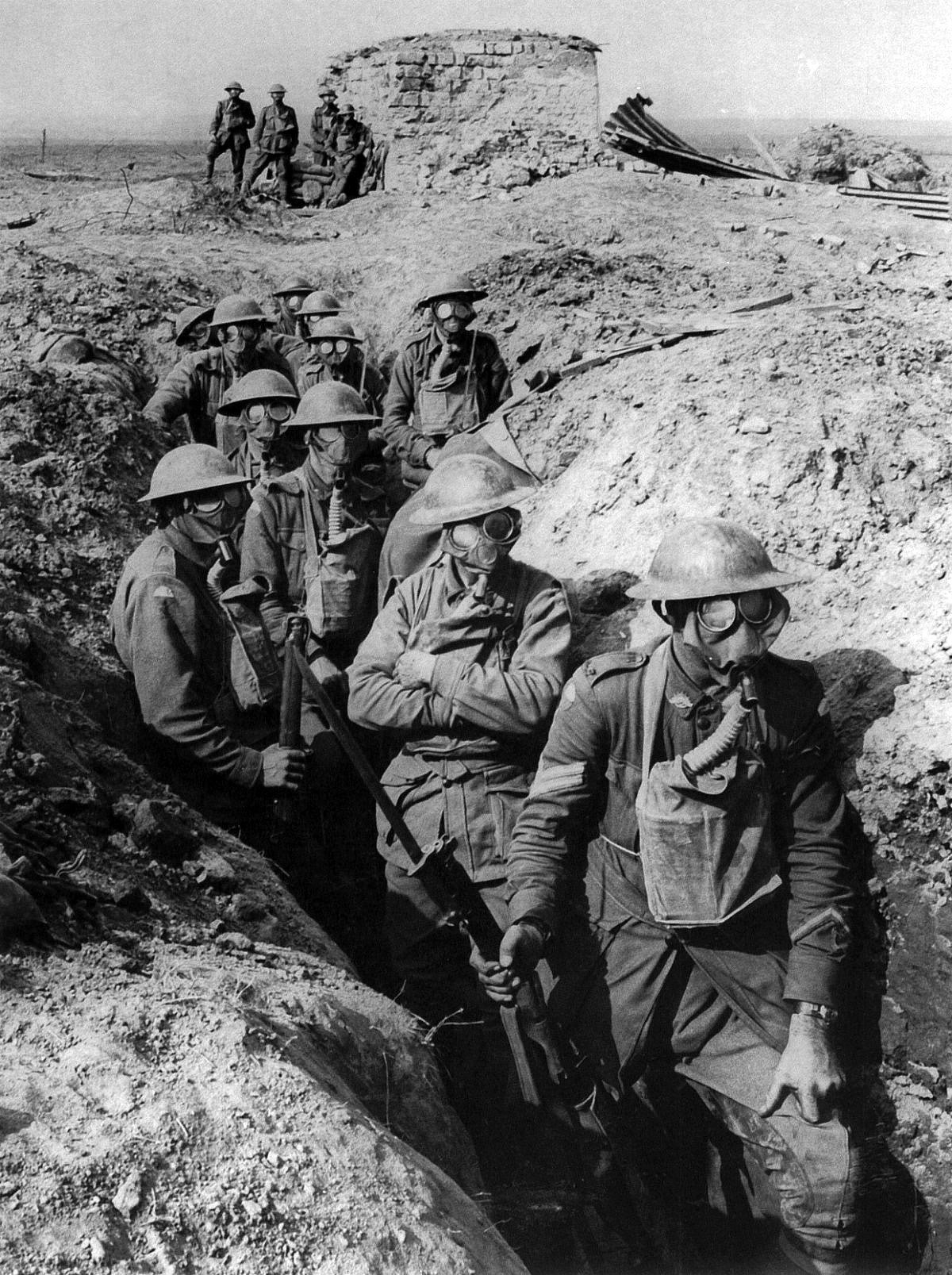
Horror, from the French author Pierre de Mazenod’s horreur was meant to describe the First World War. Scholars have discussed the ways in which the terror and destruction of the Great War have influenced a generation of writers and artists and how their work went on to shape modern horror stories today.
The Great War brought about the fear of the dead on a massive scale. This primal human instinct was confronted by millions of men, placed in a desolate and unforgiving landscape, surrounded by the corpses of millions more people like them. Former friends or enemies lay dead in countless numbers, many of whom were unable to be given a proper burial. These figures were often disfigured and unrecognizable. The Great War’s new weaponry changed the ways in which people fought, and how people died. Gas attacks left victims scarred and bloated, while mass artillery decimated people, leaving only remnants of bodies.
After the war ended, veterans of the conflict continued to live with this imagery. The public was exposed to the faces of men who had been terribly disfigured. Cosmetic surgery was in its infancy, doctors did what they could to correct horrible disfigurations like missing jaws with painted mask often held in place by fake eye glasses.
Ladd working on a mask with a soldier in her studio. Wiki Commons
The haunting imagery of World War One influenced many of the pioneers of the horror film genre. Nosferatu, Dracula, Frankenstein, all iconic films of their era were staff ed by many veterans of the conflict, for them, these pieces were a way to share the horror of the war. Dracula, who rises from his coffin, was played by a man named Bela Lugosi who literally rose from the dead, hiding under a pile of corpses to shelter from an enemy attack. Other films were more explicit, J’accuse from 1919 and its 1938 remake deal with the fears and anxieties of the soldiers in the trenches. Both films result in a climatic rising of the dead, with veterans disfigured by the war playing the part. The remake of the film leans more into the army of the dead, with the dead of nations beyond France also rising. More eff ort being put into the effects to create a truly scary scene. This work would affect many filmmakers to come, perhaps most notable, George Romero, a pioneer of the zombie genre. With his films in turn influencing many other forms of zombie media.

While not often thought of as horror media, J.R.R. Tolkien’s The Silmarillion was begun by him during the First World War. Although this book would not be published until 1977, after his death, it was the backbone of his more well known works, The Hobbit, and The Lord of the Rings trilogy. Tolkien’s experiences of the horrors of war are thought to have contributed partly to some of the more terrifying events and environments in his stories.
World War One has contributed many of its aspects to the horror genre. What had been known as “weird” fiction would be called horror fiction. The horror film would have its definitive beginnings in The Cabinet of Dr. Caligari, Nosferatu, Dracula and Frankenstein, all of them directed, written or starring veterans who found in such films a way to speak of the horror that they expedience during the war. The imagery of German shock troops, faces concealed by gas masks is imagery that has been expanded and replicated across many forms of media. This imagery perhaps stems from Otto Dix’s Stormtroops Advancing Under Gas from 1924.
Otto Dix’s Stormtroops Advancing Under Gas from 1924
The German stahlhelm, or steel helmet became another part of iconic imagery following the Great War, its marker as a part of the typical evil uniform only growing after the end of the Second World War. The helmet’s infamous silhouette has appeared notably in the Star Wars films, the association of evil and fear are connected to it. The fear that entente associated with the helmet continued to spread and influence media decades after the war.


